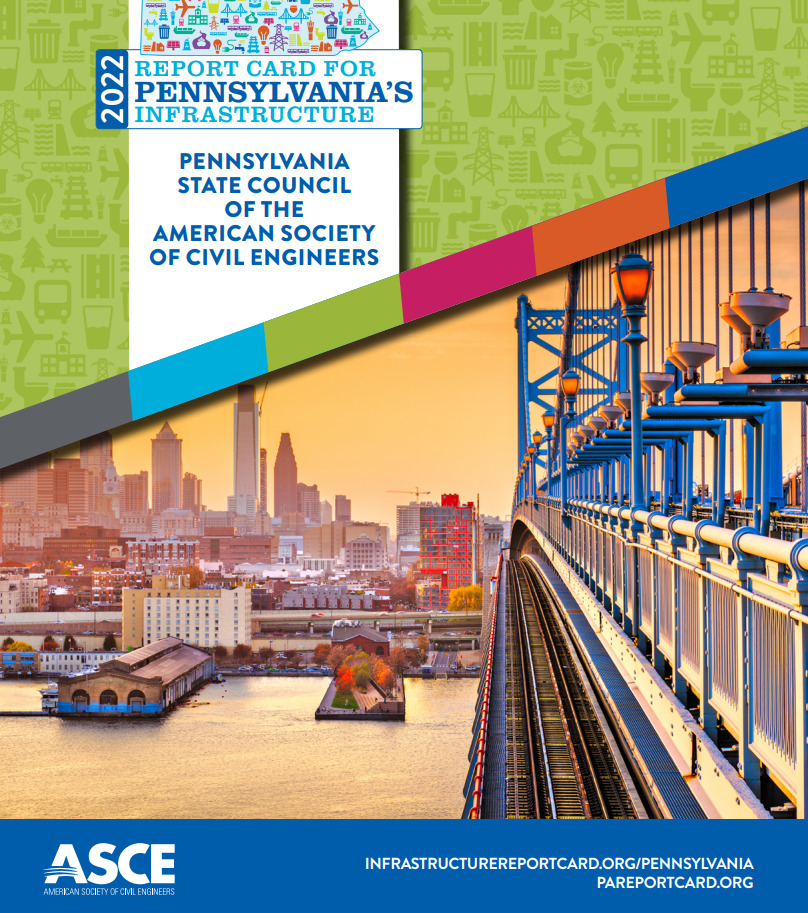2022 Pennsylvania Infrastructure Report Card
2022 Report Card GPA: C-
Members of the American Society of Civil Engineers volunteered this year to produce the 2022 Report Card on Pennsylvania’s Infrastructure. This report serves to educate the public on the status of the infrastructure in the Commonwealth. Residents, in conjunction with elected officials, can therefore better prioritize limited funding among competing, connected needs to improve the condition, capacity, operations, maintenance, safety, and resilience of infrastructure.
Overall, Pennsylvania’s infrastructure gets a ‘C-’, the same as the 2018 report card. Progress is real, but challenges remain. Pennsylvania has some of the oldest infrastructure in the country. Substantial maintenance backlogs have accrued in several areas as recent investment runs into new challenges such as inflation and resiliency to withstand climate change.
Since the previous report card, legislative support for infrastructure, public agency planning, and moderate economic for the first two years caused tangible improvements in the status of several categories of infrastructure assets. Aviation raised to a ‘B-’: upgrades included the implementation of Pittsburgh International Airport’s Terminal Modernization Program, the expansion of cargo facilities, and a focus on resiliency projects including a solar field at Northeast Philadelphia Airport. Roads is up to ‘C-’: the passage of Act 89 in 2013 resulted in the completion of nearly 3,800 roadway improvement projects, with nearly 3,100 additional efforts outlined in the PennDOT 12-Year Program as of May 2022.
The COVID-19 pandemic spurred a wave of Pennsylvanians to visit public parks, such as green spaces within walking distance managed by city department, a rail-trail maintained by a metropolitan commission, or a state park of historic origin and regional importance. However, Pennsylvania parks were downgraded to ‘C+’. An approximately $1.4 billion backlog of infrastructure projects exists for Pennsylvania’s 300,000 acres of state-owned land, plus 1,000 miles of trails. A similar sum of necessary projects is counted in the state’s 6,000 local parks. Pennsylvania’s state budget has increased funding for parks, but local funding sources are more limited.
The pandemic transformed how people use infrastructure, how it is managed, and what funding was available. Federal funding surged to meet immediate public health needs and can now be used to fund critical infrastructure. The 2021 Bipartisan Infrastructure Law plans to send $3.2 billion over five years to Pennsylvania for maintenance projects in transit. Roads became more deadly in the Commonwealth and nationwide, raising awareness and urgency to address traffic safety.
Read the executive summary here.
-
Explore Pennsylvania
- Grades
- State Fact Sheet
- IIJA Grants
Pennsylvania Infrastructure Grades
A: Exceptional, B: Good, C: Mediocre, D: Poor, F: Failing
Each category was evaluated on the basis of capacity, condition, funding, future need, operation and maintenance, public safety, resilience, and innovation
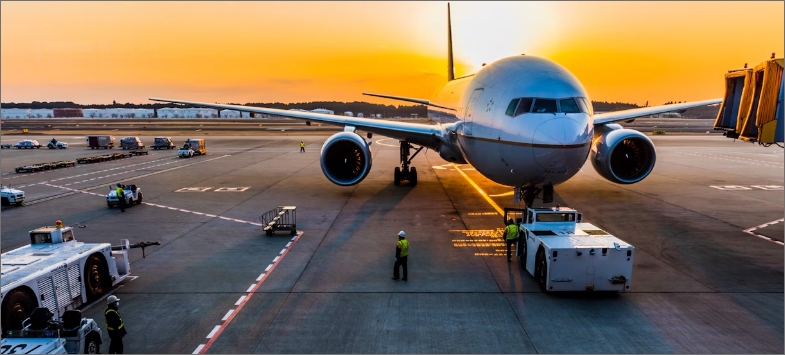

Aviation
Airports in Pennsylvania generate over $10 billion in annual payroll and over $23 billion in economic activity. The COVID-19 pandemic hampered long-term infrastructure plans with significant reductions in usage fees, but activity has bounced back. Enplanements at Pittsburgh are now 65% of pre-COVID level and 85% of that benchmark in Philadelphia. Allegheny County Airport now sees more customers than before the pandemic. Pennsylvania’s capital budget program sees requests for key projects three to four times the amount of funding available. Positives over the last four years include implementation of Pittsburgh International Airport’s (PIT) Terminal Modernization Program, the expansion/planned expansion of cargo facilities, and a focus on resiliency projects including a micro-grid at PIT and a solar field at Northeast Philadelphia Airport (PNE).
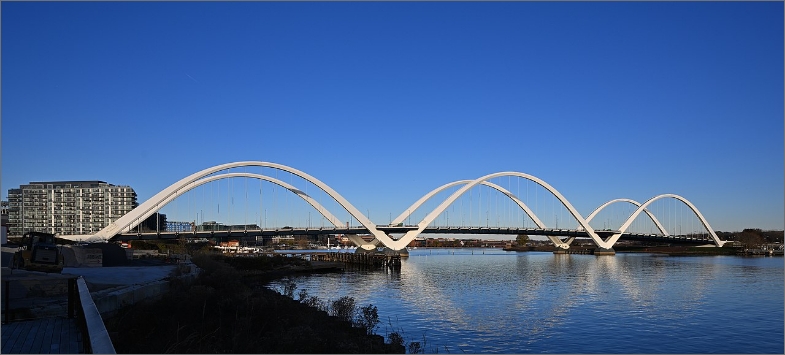

Bridges
Pennsylvania has the ninth largest bridge inventory in the nation, coupled with an average bridge age nearly a decade older than some other states. Despite a 4.5% decrease in the number of poor condition bridges, Pennsylvania contains the second highest number of poor condition bridges among states: 25% more than the next state. The 2021 Bipartisan infrastructure Law will provide $13 billion in transportation funding over five years to help offset these. However, even that elevated level falls well short of the $18 billion annual need. Pittsburgh’s 2022 Fern Hollow Bridge collapse represents a vivid example of the extreme consequences of aging infrastructure.


Dams
Dams in Pennsylvania manage flood risk, provide fish and wildlife habitats, recreational opportunities, and drinking water supply. Of the 1,498 dams in Pennsylvania, over half (54%) are classified as high-hazard, likely causing death and economic damage under failure. The average age of Pennsylvania dams is 76 years old, nearly 20 years older than the national average and well beyond the typical 50-year design life. The high average age of Pennsylvania dams makes incorporating resiliency and innovation into the redesign cost-prohibitive, especially for the 61% of owners who are private citizens or organizations. Raising the grade on Pennsylvania dams requires increased funding, perhaps the establishment of a loan or grant program to financially assist owners with repairs, abandonment, and removal projects. Supporting modernization of current federal assistance programs through the passage of the 21st Century Dams Act would also serve to benefit Pennsylvanians.


Drinking Water
Most of Pennsylvania’s public drinking water systems are struggling to fund projects to meet their replacement goals as well as new regulations. That’s despite recent investment in main replacement and improvement in identifying vulnerability to failures for prioritization of repairs. Over the next 10 years, Pennsylvania’s public water systems are projected to have a $10.2 billion funding gap, a number only very slightly offset with recent federal actions to provide infrastructure funding. In addition, there remain substantial amounts of lead service lines posing risk to public health, particularly for underserved communities. Emerging contaminants such as perfluoroalkyl and polyfluoroalkyl substances (PFAS) pose growing public health threat. To conquer these issues, water utilities need to adopt full-cost pricing and find technologies that enable more efficient operation and emergency response.
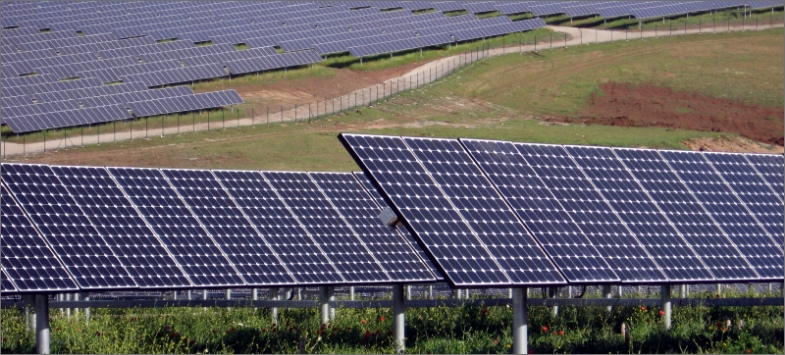

Energy
Pennsylvania benefits from a large fuels production industry focused on natural gas, as well as a robust portfolio of power generation facilities that makes the state America’s largest electricity exporter. The multi-state electricity grid operated by PJM Interconnect serves all of Pennsylvania, and that regional power grid has a 30% generation capacity buffer to meet electricity demand. Some local utilities in Pennsylvania, however, have seen the reliability of their distribution systems worsen, with local blackouts nearly tripling in number over the past 25 years. Achieving a reliable and decarbonized power grid in Pennsylvania would require as much as $100 billion in investment in generation, transmission, and end-use electrification over the next 25 years. Electrifying Pennsylvania transportation alone could double electricity consumption in the state and connecting the state’s most significant industrial carbon emitters to a network of sequestration pipelines could involve a $2 billion investment in addition to the costs of capturing CO2 from nearly 300 power plants and industrial facilities.


Hazardous Waste
There was an estimated 345,000 tons of hazardous materials managed in Pennsylvania during 2019, the latest year for which data were available. This is a 19% decrease from the previous 2017 biennial reporting year, with four fewer sites Superfund National Priority List than the 2018 report card – a 4% decrease of the Commonwealth total. Voluntary cleanups under 1995’s Act 2 included 314 successful cleanups in the FY 2020-21, with another 1,753 site cleanups in progress. Despite increased state funding and new opportunities from federal legislation, disproportionate hazardous waste impacts persist within low-income and minority communities.


Levees
Pennsylvania remains one of the states at highest risk for structural damage from flooding of both natural and manmade disasters. Levee systems throughout the state seek to help mitigate this risk, but they are older than advisable: 58 years old is the average age of 204 levees covering approximately 155 miles. Nine levee systems are categorized as moderate risk and one system has been identified as low risk. Recent analysis identifies Pennsylvania as the state with the second largest risk and total for structural damage costs due to flooding ($1.22 billion). Increased state funding and broader eligibility for existing programs could provide localities with necessary specialized expertise to plan, design, and construct levee rehabilitations for existing needs and future challenges from climate change.
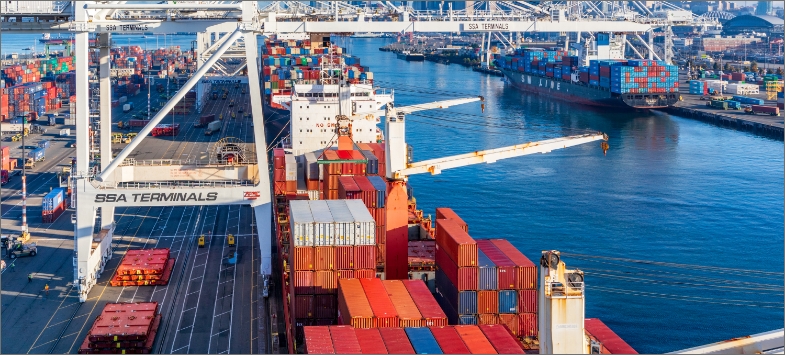

Ports
Conditions at Pennsylvania’s two main ports – Erie and Philadelphia – move over 100 million tons of goods, the ninth-highest figure among U.S. states. PhilaPort has identified approximately $59.5 million of repairs necessary in the short term to address serious or critical issues for its landside operations, waterfront structures, and in-water work. Growth projections at both ports require an investment need on the order of $300 million for increased capacity. Performance of the two ports is difficult to further ascertain because public data are limited regarding their facilities condition and spending for operations and maintenance.


Public Parks
Parks in Pennsylvania are undervalued in civic decision making, despite their vital importance. An approximately $1.4 billion backlog of infrastructure projects exists for Pennsylvania’s 300,000 acres of state-owned land, plus 1,000 miles of trails. A similar sum of necessary projects are counted in the state’s 6,000 local parks. Pennsylvania’s state budget has increased funding for that need in state lands, but local public land is reeling. The parks and recreation portion of Philadelphia’s general fund dropped 13% from 2018 to 2021. In that same time, the operating budget for Pittsburgh parks dropped 19%. Local government must increase funding with new, dedicated sources and significantly increase data for planning and asset management
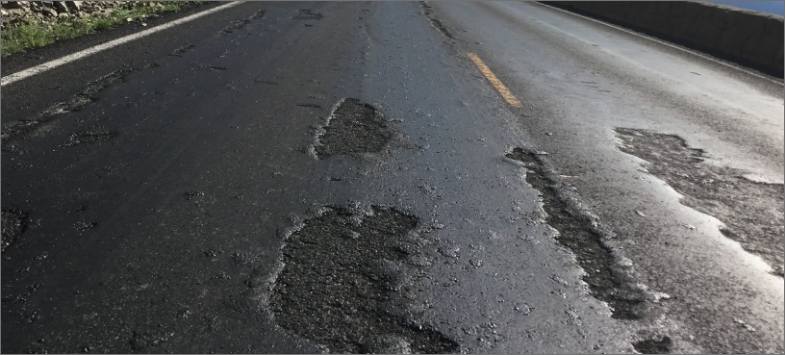

Roads
The passage of Act 89 in 2013 resulted in the implementation and completion of nearly 3800 roadway improvement projects, with nearly 3,100 additional efforts underway and in the PennDOT 12-Year Program as of May 2022. Despite this major undertaking, there remains an $8 billion shortfall of unmet needs. Pennsylvania ranks 45th of the 50 states in terms of congestion delays, imperiling key freight routes amid a supply-chain crisis. With the passage of the federal Bipartisan Infrastructure Law, the Commonwealth is slated to receive $11 billion for targeted for roadway projects. Agencies and decision-makers should prioritize safety projects and work to reduce Pennsylvania’s 1,129 traffic deaths per year.
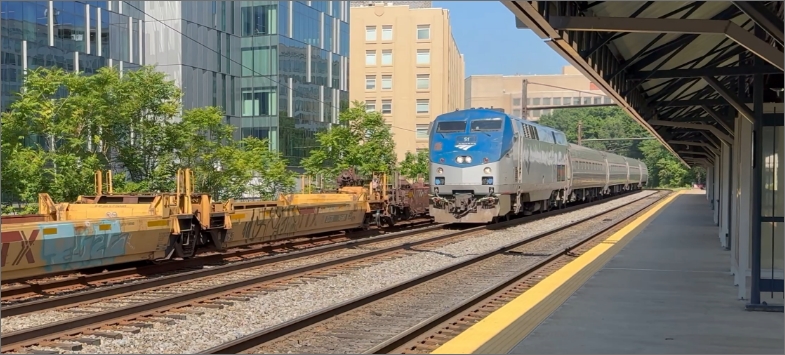

Rail
Pennsylvania’s rail network is as diverse as the commonwealth itself, ranging from intercity passenger service to transcontinental freight rail systems, to small, short line railroads serving rural areas of the states. The 6,700-mile state network features three Class I operators (CSX, Norfolk Southern, Canadian National), two Class II companies, and 32 Class III operators. In general, Class I infrastructure is in good to excellent condition. Amtrak service will expand with the recently announced agreement to use Norfolk Southern track to open a passenger rail line in Western Pennsylvania. The 2020 Pennsylvania State Rail Plan reports $6.9 billion of investments in capital projects between 2021 and 2045. This includes $5.7 billion for 132 passenger rail projects and $1.2 billion for 323 freight rail projects, the latter of which are mostly Class III railroad infrastructure needs. The bipartisan infrastructure law will help expand and improve passenger rail services in the Keystone state, while keeping the freight network modern and safe.
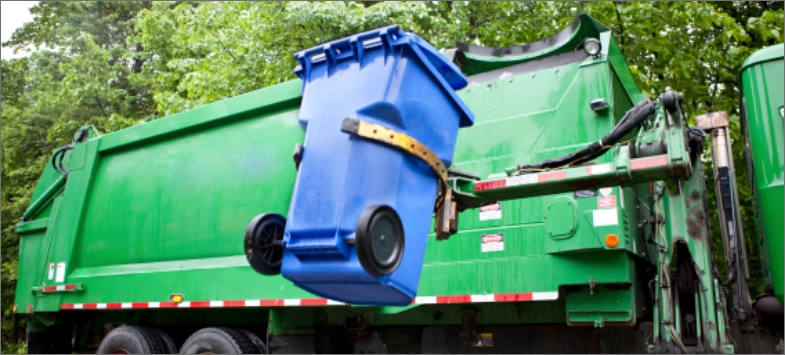

Solid Waste
Pennsylvania residents generate less municipal solid waste than the American average: 4.0 and 3.8 pounds per day in 2019 and 2020 respectively, compared to the national mark of 4.9. In total, the state’s 43 active municipal waste have adequate capacity, but remaining life differs greatly by location. The Greater Lebanon Refuse Authority reports less than 4 years remaining while the McKean County Landfill has 190 years’ worth. The state recently added a fee of $0.25 per ton and $4 per ton fee to benefit land conservation programs, the first among states to divert mandatory tipping fees. Despite that innovation, flexibility is limited at the local level. The state should modify Act 101 to permit county and/or local governments to establish various methods for generating revenue to sustain their solid waste management, recycling, and education programs.
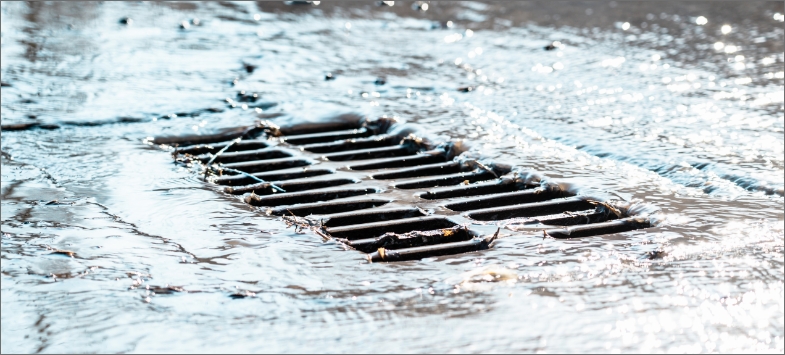

Stormwater
While Pennsylvania’s stormwater infrastructure is generally performing adequately for lower-intensity events, more intense, frequent, and longer duration storms overwhelm the aging network. Over 65 utilities across the Commonwealth provide much needed dedicated funding to address local stormwater needs, representing $1.3 billion for wastewater and stormwater infrastructure over the next five years. But approximately $2 billion in stormwater assets have reached the end of their useful life and a total need exists of $6.7 billion in stormwater funding over the next three to five years. The Commonwealth lacks an easily accessible and accurate database of all publicly and privately owned stormwater assets, a tool could strengthen operation and maintenance programs and life-cycle assessments. The Commonwealth’s primary tool for guidance and regulation for the design of stormwater assets is over 15 years old.


Transit
Transit service and its supporting infrastructure is crucial for Pennsylvanians in dense cities, suburban clusters, and rural areas. In 2020 – a historically low year for transit ridership across the country – passengers rode over 1 billion miles in Southeastern Pennsylvania Transportation Authority (SEPTA) vehicles and 219 million miles on the Pittsburgh Regional Transit Authority network. Unfortunately, transit infrastructure has been underfunded for decades. SEPTA reports $4.6 billion of unfunded capital needs, while the Port Authority of Allegheny County requires $175 million for capital improvements to its light rail network alone. Transit operators and the state have been investing in vehicle replacements, in part thanks to Act 89 funding. Meanwhile, the federal bipartisan infrastructure law will provide Pennsylvania transit with $3.2 billion over five years, including $615 million in 2022 alone, to help address deferred maintenance. However, additional dedicated funding for capital and operations efforts is necessary to attain state of good repair across systems and better attract riders with greater service levels.
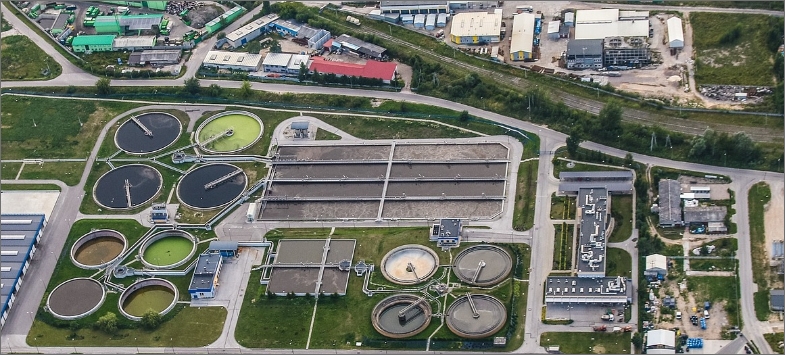

Wastewater
Aging wastewater management systems discharge sewage into Pennsylvania’s surface water each year. The average age of most sewer systems is approaching 75 years with many pipes over 100 years old. 26% of the state is served by on-lot systems with nearly one-quarter failure rate. Two-thirds of the state’s Sewage Facility Plans are over 20 years old. The Commonwealth has a funding gap of $8.4 billion over the next 10 years to repair existing systems, upgrade existing systems to meet regulatory requirements, control Combined Sewer Overflows (CSOs), address illicit Sanitary Sewer Overflows, and construct new or expand existing systems to meet increasing demand. Available funding over that time is estimated to be $900 million, only about one-tenth of the required annual investment.
State Fact Sheet
Download Fact Sheet
Aviation
$93.5 million in 2024 airport improvement grants across 16 major airports

Drinking Water
$24.3 billion total drinking water need

Transit
261 million passenger trips across 51 systems in 2023

Bridges
23,299 bridges, 12.6% of which were structurally deficient in 2024

Hazardous Waste
127 Superfund sites

Wastewater
$8.2 billion total wastewater need

Dams
787 high hazard dams

Levees
198 miles of levees protect $9.6 billion of property.

Roads
49% of roads are in poor or fair condition

Connect with Your Legislators
Let everyone know how important it is that we continue to invest in the future of America’s infrastructure.
Take Action Today


